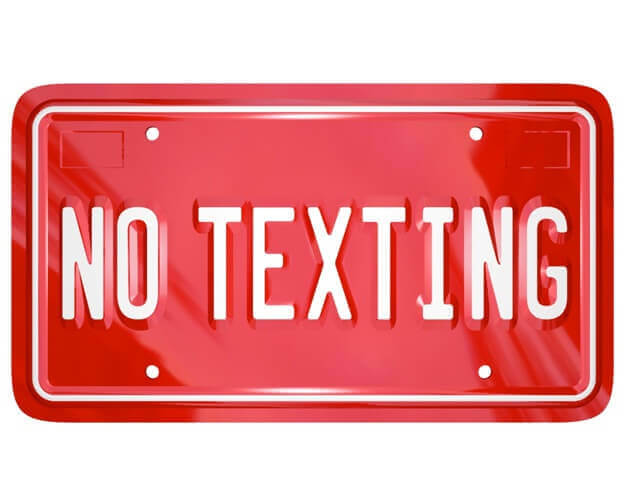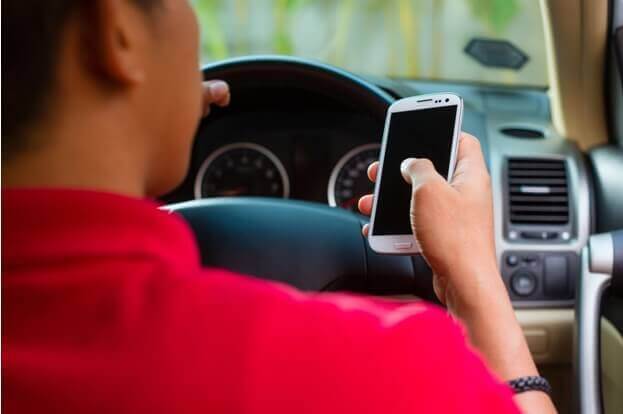Anything that takes a driver’s attention off the road is dangerous, but with more and more Americans owning and relying on cell phones, texting while driving has become a particularly pervasive problem. And with an estimated 350,000 distracted driving-related deaths per year, it’s a problem that our country has finally started noticing and trying to prevent.
41 states now ban texting while driving, with the Florida ban finally going into effect in October 2013. While making it against the law to text and drive is a good starting point, that act alone isn’t enough. In Florida, for example, texting while driving is only a secondary offense, which means that a police officer has to pull you over for something else—like speeding or driving erratically—rather than just asking you to stop because they’ve spotted you using your phone. And those people who do get cited for texting while driving only face a $30 fine—hardly a significant incentive for someone who’s determined to multitask behind the wheel.
So if distracted driving laws aren’t enough, what’s really going to stop people from texting while driving? The only truly effective way to stop this behavior is if we have a nationwide shift in the way we think about this dangerous activity.
Failing to See Danger in Texting While Driving
Most drivers probably recognize on some level that they can’t fully concentrate on their surroundings while texting, and that sending a message while driving puts them at a greater risk for being in an accident. However, far too many people weigh the costs and benefits of texting while driving and decide that the risk is worth the immediate satisfaction of sending and receiving messages. They think that accidents only happen to other people, and that they’re more capable of safely multitasking than the general population. Teen drivers, who have not yet fully developed the part of their brain involved in problem-solving, are at a particularly high risk for this kind of flawed thinking.
To address the logical fallacy that “texting while driving isn’t that dangerous for me,” many government organizations and private companies have launched campaigns aimed at emphasizing the risks of distracted driving. Notable recent campaigns include:
- End Distracted Driving (EndDD) uses their website to encourage people to host presentations or become speakers to educate their communities about the dangers of distracted driving.
- Verizon notes that mobile phones are a part of everyday life, but wants to encourage people to put them away while driving. They recently launched a video PSA showing text messages popping up and blocking a driver’s view, and they’re encouraging viewers to pledge to drive responsibly.
- Toyota, recognizing the problem of drivers taking “selfies” on their phones, created an ad showing a totaled car through different Instagram filters with the tagline, “Don’t Shoot and Drive.”
These types of campaigns are beginning to raise awareness about the distracted driving issue, but in order for the idea to really take hold, we need to make texting while driving culturally unacceptable in our society.
Designated Driver Campaign Serves as Good Example
Image Source- http://1.usa.gov/1da7164
If we’re looking for ways to change the way our society views texting while driving, the designated driver campaign launched in 1988 provides some good examples. Before the campaign was launched, the idea of having someone stay sober to drive their friends home wasn’t something that had ever really caught on in the US. However, the campaign, which kicked off with the slogan “The Designated Driver is the Life of the Party!” made the designated driver a new social norm. The campaign made further inroads when many popular TV shows, such as The Cosby Show and Cheers, added scenes with designated drivers. Thanks to the pervasiveness of the campaign, by 1998 a majority of adults who drink had either been a designated driver or had a sober friend drive them home at some point.
If distracted driving campaigns are going to cause the same kind of cultural shift, they need to be integrated into mainstream culture. As with the designated driver campaign, maybe we could see more TV and movie scenes where characters choose not to text and drive—or do but suffer negative consequences, as a result. Once putting your phone away while driving becomes a culturally accepted norm, it will become much easier to curb distracted driving.






